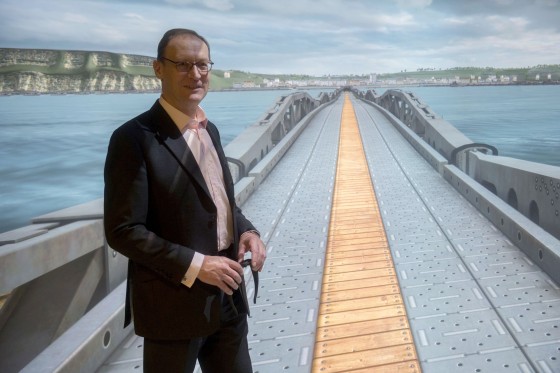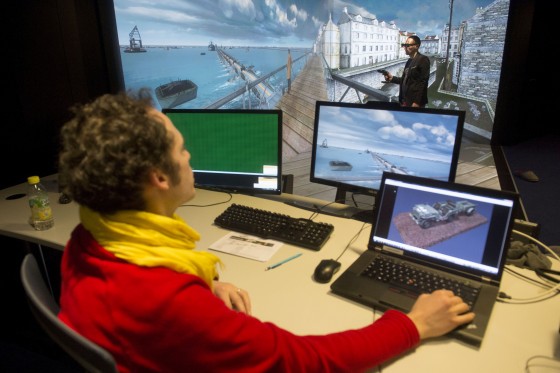A Dassault Systèmes team virtually reconstructs Mulberry Harbor, the Waco glider and other key innovations. The results will be part of a documentary on PBS.
Working from a variety of drawings and artifacts, a team from Dassault Systèmes has used the Catia 3D CAD and other company products to virtually recreate some of the key engineering innovations behind the D-Day Allied invasion of Normandy in World War II.

The engineering innovations include:
- The Waco CG-4A glider, a relatively small, lightweight and maneuverable, and silent plane. The Waco gliders were used to land up to 13 soldiers or one vehicle each in enemy territory during the early hours of the June 6 invasion.
- The Landing Craft, Vehicle & Personnel (LCVP), designed by American businessman Andrew Jackson Higgins; each unit carried a platoon-sized complement of men and weapons to the beaches of Normandy.
- The Mulberry Harbor, considered by many as one of the most extraordinary technological feats of WWII. Developed in part by Major Allan Beckett of the Royal Engineers, it was an artificial harbor built in England, transported across the English Channel and assembled off the coast at Arromanches to unload the vast quantities of supplies and men that were needed for battle. The Mulberry Harbor was the first temporary deep water facility of its kind ever devised.
Much of the hardware deployed on D-Day was part of the huge Allied effort to develop the weapons, airplanes, landing crafts and other innovations needed for the direct attack on occupied Europe. A beach assault required the engineering of wholly new ways to land an invading army, along with the necessary gear and supplies that the operation entailed.
Today, nearly seventy years after D-Day, only pieces of the Harbor remain. To recreate the Harbor, the Dassault Systèmes team compiled what remained of the original plans from the Royal Engineers Museum in London, the construction and maintenance manuals, the aerial photographs taken at the time and additional information provided by Tim Beckett, the son of Mulberry Harbor designer Allan Beckett, himself a marine engineer.
All of this data was brought together and scrutinized over a period of almost eight months by the lab teams, who were able to recreate the Mulberry Harbor and enable the son of its inventor to virtually stand on it in an immersive 3D experience. The 3D model is an accurate, scientific reconstruction of the Harbor that will allow many to see and experience a site that was destroyed after WWII.

The Dassault Systèmes teams also identified, located and gathered all available data in order to create detailed 3D models of both the Waco glider and LCVP landing craft, right down to the last nut and bolt, taking careful account of the specific materials used and how they would have behaved in actual conditions.
The recreation of Mulberry Harbor will be featured in an upcoming two-hour documentary, “D-Day’s Sunken Secrets,” produced by the PBS science series, NOVA.
The results of Dassault’s work to reconstruction these engineering marvels can be viewed at http://www.3ds.com/dday/.





